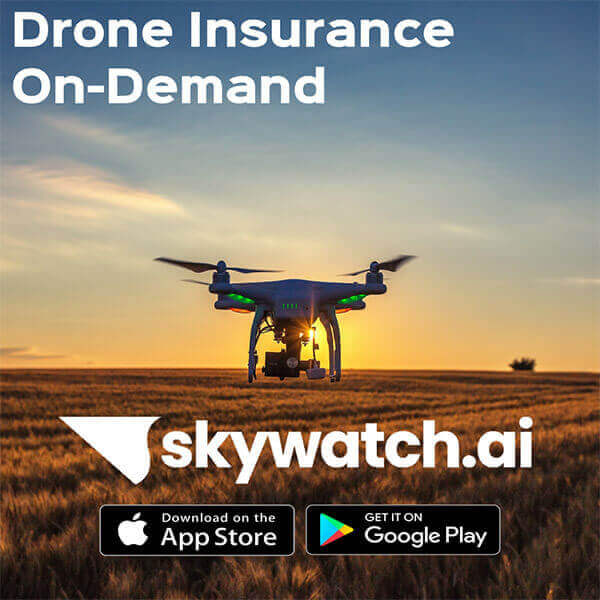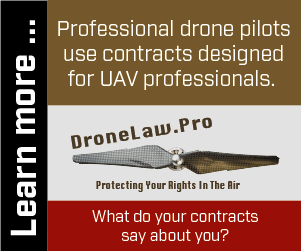Skye Link Business Advice June 21, 2021
Understanding Airspace & Compliance During UAS Drone Flight Operations
Introduction:
One of the first things that needs to be done when a client requests a new drone service is determining if you are able to operate UAS in that airspace. Depending on your proximity to airports, helipads, public events, etc, you may need certain permissions to fly legally.
Basics of Airspace:
Before we discuss how to check your airspace and maintain compliance during your drone operations, let’s understand the dynamics and define the various types of airspace. 2 basic types of airspace classifications: Uncontrolled & Controlled. Drone pilots largely are free to fly in uncontrolled airspace (also classified as class G airspace) so we’ll focus our discussion on controlled airspace from here on out.
.png)
As you can see from the above FAA airspace classification chart, there are many different zones of controlled airspace.
- Uncontrolled Airspace (Class G)
- Controlled Airspace (Class A, B, C, D, E)
- Special Use/Other Airspace Areas (Warning Areas, Military Operation Areas, Restricted Zones, Temporary Flight Restrictions, National Security Areas)
The important thing to note, is that in any of these controlled or restricted airspace types, a waiver is necessary to operate legally. There are many resources to look up airspace laws including B4UFLY FAA Mobile App, AirMap or Kittyhawk. These services allow you to visualize what airspace restrictions apply in certain geographic areas and even apply for authorization in certain locations.
Now, let’s discuss what is needed to obtain authorization and the various methods for securing the required airspace approvals.
How to Obtain Authorization & Approval:
What is LAANC? Low Altitude Authorization and Notification Capability (LAANC) currently offers the ability for drone pilots to gain almost immediate authorization to airspace around hundreds of airports around the country after entering the details of their operations and agreeing to various rules while operating UAS aircraft. As of May 2021, the FAA expanded to over 700 airports nationwide.
Although LAANC has made airspace compliance much easier for remote pilots, there are still many areas/airports where LAANC is not available. In those instances, you are able to request a manual authorization with the FAA through DroneZone.
Using FAA’s DroneZone, remote pilots and drone service providers can request airspace authorizations and waivers. After entering the details of your operation (timeline, location, purpose of operation, etc) you are able to submit directly to an FAA representation who will be assigned your case. Authorizations can be for a specific location or a broader area governed by a single ATC jurisdiction.
Depending on the airspace, approvals can take anywhere from a few days to a few months. Make sure to take these timelines into account when planning and scheduling your UAS operation.
So Who’s Responsibility is All This?
Ultimately, the remote pilot in command is responsible for airspace compliance and conducting safe operations. With that said, it is important that the company/client who has hired the pilot/drone service provider does their due diligence to ensure the drone operator is complying with all necessary laws and regulations.
This applies to airspace, but to all other FAA regulations as well including verifying the remote pilot’s part 107 certification and/or UAS registration. Regardless of if the hiring party knowingly or unknowingly hires an uncertified operator or one who is reckless and does not comply with regulations, there are negative consequences that can come back to haunt them.
Repercussions of Non-Compliance:
Compliance is key. If a remote operator does not comply with airspace restrictions there can be some serious consequences in various forms such as fines, penalties, risk of operational disaster, credibility hit, etc.
Generally, anyone flying in a careless and reckless manner could face civil and criminal penalties as well as jail time with fines up to $27.5K for civil penalties and up to $250k for criminal penalties. Additionally, If you knowingly or willfully violate a security TFR, you can have some serious consequences. Doing so is a criminal punishment, with potential to be sentenced to federal prison for up to a Year and/or a $100,000 fine.
Those that can be held responsible obviously included the remote pilot in command, as well as the company that contracted their services.
Overall, there are many moving parts when it comes to airspace. Do not risk a credibility hit to your company by going with a drone service provider (DSP) that may be the cheapest option yet has a higher risk of having an operational disaster.
Conclusion:
As discussed, understanding the tools to navigate airspace laws is crucial to compliant operations in order to avoid the negative repercussions of non-compliant operations. If you are hiring a drone service provider, make sure they are following all applicable laws because it can come back to haunt you later. Ignorance is not an excuse so make sure to do your due diligence to avoid issues down the line.
When you work with Skye Link, you never have to worry about navigating the hurdles of airspace compliance because Skye Link manages this entire process for you to ensure all UAS operations happen legally, safely, and professionally. To discuss your project needs and how airspace compliance will play a role in the drone flight operations, contact Skye Link today for a free consultation.


